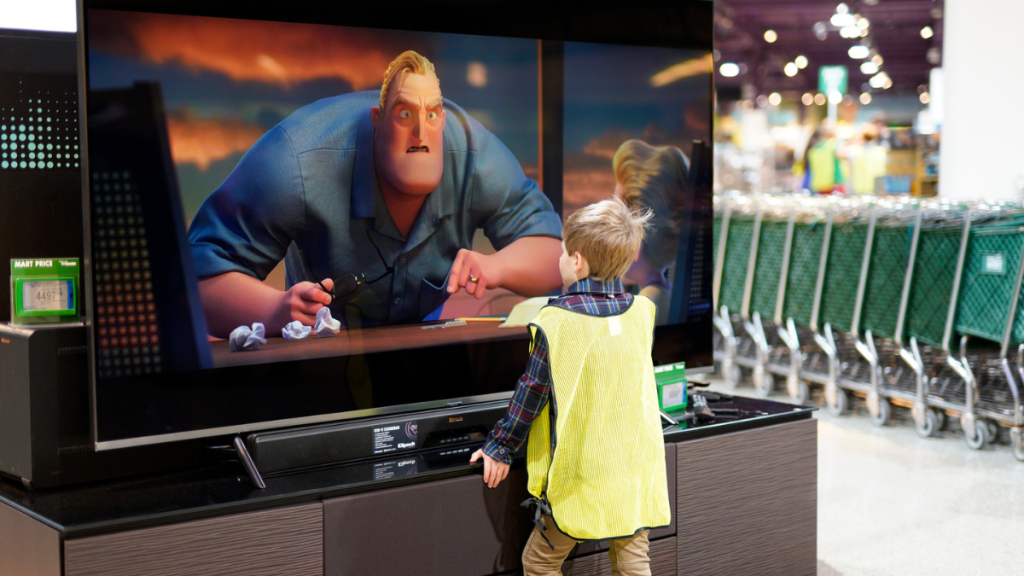Italian television has long been more than just a vehicle for entertainment—it has been a mirror, a teacher, and a battleground for ideas. It reflected societal values but actively shaped cultural norms, political discourse, and generational identity.
Since its early days in the 1950s, television in Italy has played a pivotal role in forging a shared national identity and shaping social behaviors, often reflecting—and sometimes even challenging—the cultural, political, and generational divides that define Italian society.
Let’s explore how the evolution of Italian TV channels continues to shape and reflect Italian society today.
A Tool for National Unity
When RAI (Radiotelevisione Italiana) launched its first broadcasts in 1954, the objective was clear: unify a linguistically and culturally fragmented country still reeling from World War II. At a time when many Italians spoke only their regional dialects, television became a tool for linguistic standardization, helping to spread the use of standardized Italian across the country. Educational programs and cultural broadcasts played a role in this process, turning the small screen into a classroom for millions. In its early decades, Italian TV didn’t just reflect culture—it actively shaped it.
From Education to Edutainment
As the decades progressed, television evolved along with Italy’s shift toward social television marking a departure from passive viewership toward real-time participation.
But this interactivity, while empowering, also blurs the line between community and consumer. The 1980s marked a transition from state-controlled programming to a competitive commercial market, driven in large part by the rise of Silvio Berlusconi’s Mediaset network. This period introduced a wave of American-style programming and light entertainment, giving birth to a new kind of TV culture. Variety shows, game shows, and soap operas gained popularity, bringing a more relaxed and sensationalist tone.
Programs like Drive-In symbolized the shift toward a more hedonistic, consumer-driven culture, blending comedy with a bold visual style and sometimes risqué content. At the same time, they highlighted growing gender stereotypes and media commodification of the female body, igniting debates that still echo in Italian media criticism today.
Reality Television and the Cult of Spectacle
The early 2000s brought another transformation. With the success of shows like Grande Fratello (Big Brother), Italy embraced reality television, which quickly became a cultural phenomenon. These programs blurred the line between fiction and reality, offering audiences an immersive voyeuristic experience. The rise of reality TV also signaled a shift in values, emphasizing fame, image, and personal drama over substance.
Meanwhile, the infotainment trend—news delivered with the flair of entertainment—gained ground, changing how Italians consumed current events. Satirical news shows like Striscia la Notizia and Le Iene found popularity by combining investigative journalism with irreverent humor, proving that television could still be a powerful platform for social critique, even in its most playful forms.
Convergence and Community
Today, Italian television operates in a convergent media landscape shaped by streaming services, second screens, and social media interaction. Audiences are no longer just viewers—they are participants. Social TV, second-screen apps, and hashtag campaigns have made programs like X Factor Italia and Bake Off Italia into real-time cultural events. These strategies have redefined engagement, helping broadcasters retain relevance among fragmented and digitally savvy audiences.
This evolution isn’t merely about technological innovation; it reflects deeper cultural dynamics. As Italy’s population ages and younger viewers shift to on-demand content, networks must adapt to a complex ecosystem of traditional expectations and new viewing habits. Public service programming still holds space for education and heritage, while commercial channels increasingly depend on branding and social engagement to remain competitive.
A Double-Edged Mirror
While often criticized for political slant or sensationalism, Italian television remains a key platform. It remains a vital space where collective identities are shaped, norms are debated, and public life is reflected in both serious and satirical forms. Shows like Pechino Express and Gazebo demonstrate how TV can be playful, ironic, and reflective all at once—making room for social commentary without losing the audience’s attention.
In this way, Italian television continues to influence the country’s culture not just by broadcasting content, but by initiating conversation, shaping public opinion, and creating shared experiences in an increasingly digital world. As the medium evolves, it still carries the power to connect, question, and, ultimately, define the Italian way of life.

